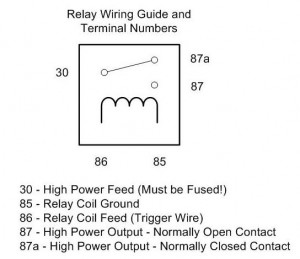RELAY
On the Control Panel there are four relays present in a straight line, parallel to the Terminals. A relay is an electrically operated switch. Many relays use an electromagnet to operate a switching mechanism, but other operating principles are also used. Relays find applications where it is necessary to control a circuit by a low-power signal, or where several circuits must be controlled by one signal.
DESIGN & OPERATION:
A simple electromagnetic relay consists of a coil of wire surrounding a soft iron core, an iron yoke, which provides a low reluctance path for magnetic flux, a movable iron armature, and a set, or sets, of contacts; two in the relay pictured. The armature is hinged to the yoke and mechanically linked to a moving contact or contacts. It is held in place by a spring so that when the relay is de-energized there is an air gap in the magnetic circuit. In this condition, one of the two sets of contacts in the relay pictured is closed, and the other set is open. When an electric current is passed through the coil, the resulting magnetic field attracts the armature, and the consequent movement of the movable contact or contacts either makes or breaks a connection with a fixed contact.
# The relay’s switch connections are usually labelled COM, NC and NO:
- COM = Common, always connect to this, it is the moving part of the switch.
- NC = Normally Closed, COM is connected to this when the relay coil is off.
- NO = Normally Open, COM is connected to this when the relay coil is on.
CONFIGURING RELAY:
- Connect to COM and NO if you want the switched circuit to be on when the relay coil is on.
- Connect to COM and NC if you want the switched circuit to be on when the relay coil is off
RATING & SPECIFICATION:
276XAXH-12D
7A,240VDC
7A,30VDC
1/10HP 120VAC









